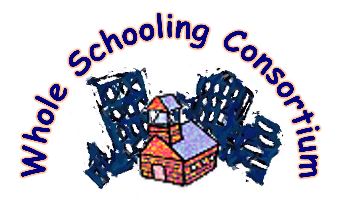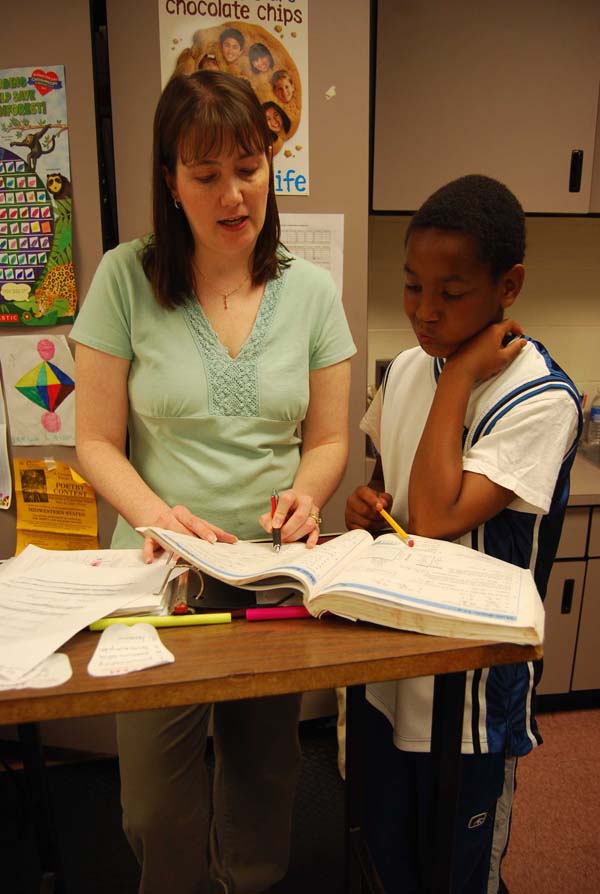
ASSESS STUDENTS TO PROMOTE LEARNING
Effective schools go far beyond using standardized tests. Rather authentic, curriculum-based assessment is used to determine what students know so that learning strategies can be targeted to help them go to the next level of performance. Systematic tools are also used to help understand how a student best learns to target instructional strategies most effectively. Links.
No area of educational practice is as controversial and problematic as student assessment. Throughout the world, a move is on whose stated goals are to make schools more accountable for their outcomes. A key piece of this movement is the use of standardized tests as the primary measure of effectiveness of student learning and evaluation of schools. The fact is, however, if you are interested in pursuing personal excellence and citizenship for your students, standardized tests don’t contribute very much. First, their focus is much too narrow. Most emphasize basic facts in core subjects such as reading, math, and science. Presently, such assessment is limited to these three areas under the requirements of NCLB in the United States. Even in these subjects, however, most tests do not engage students in problem solving and using skills and information in performing authentic tasks. Few involve students in meaningful thinking beyond factual recall. Of course, there simply are no tests for other important areas in children’s development – eg. honesty, relationships, critical thinking, and more. The second problem is related to the first. Many schools are following the narrow focus of these tests to further narrow their curriculum, reducing and restricting the quality of learning (Kohn, 1999; Neill, Guisbond, & Schaeffer, 2004).
 Effective
assessment for personal excellence and citizenship has three key purposes:
(1) guide teachers in developing, delivering, and adapting curriculum
and instruction to facilitate children learning; (2) improve the culture
and environment in schools to support learning; and (3) report progress regarding
how well schools are achieving their stated purposes and goals to parents
and
the community. Most fundamentally, assessment should help determine whether
a school is meeting its mission. That seems pretty fundamental. However,
this seldom happens. While most school districts have mission statements
that focus
on the whole child promoting personal excellence and citizenship, when they
assess student learning almost always these districts use the very traditional
structure of ‘subjects’ as the framework for assessment. Thus,
most school districts have no way of knowing whether they are meeting their
mission or not (Fairtest, 1995; Kohn, 1999; Peterson, 2001).
Effective
assessment for personal excellence and citizenship has three key purposes:
(1) guide teachers in developing, delivering, and adapting curriculum
and instruction to facilitate children learning; (2) improve the culture
and environment in schools to support learning; and (3) report progress regarding
how well schools are achieving their stated purposes and goals to parents
and
the community. Most fundamentally, assessment should help determine whether
a school is meeting its mission. That seems pretty fundamental. However,
this seldom happens. While most school districts have mission statements
that focus
on the whole child promoting personal excellence and citizenship, when they
assess student learning almost always these districts use the very traditional
structure of ‘subjects’ as the framework for assessment. Thus,
most school districts have no way of knowing whether they are meeting their
mission or not (Fairtest, 1995; Kohn, 1999; Peterson, 2001).
Reflection 1-8 Review the mission and purpose statements earlier in this
chapter. How would you devise a process to determine how well students had
achieved
these stated purposes and goals?
Effective
schools go far beyond use the standardized tests. Rather teachers use authentic,
curriculum-based assessment to determine
what students know
so that learning strategies can be targeted to help them go to the next level
of performance. To help children learn, educators assess what students know,
what they want to know (understanding that this itself is part of the learning
process) and how students best learn. Assessment is used to guide daily instruction.
Meaningful assessment must have the following characteristics (Fairtest,
1995; Kohn, 1999; Peterson, 2001):
•
Be organized around the ultimate educational mission of the school – e.g.
personal excellence, democratic citizenship, lifelong learner, etc.
•
Be based on the actual curriculum and learning opportunities in the school
•
Involve students in performing meaningful tasks that demonstrate learning authentic
(connected to genuine activities related to home and community life)
•
Focus on growth and improvement rather than meeting a predetermined criteria
or score that labels a student as ‘proficient’ or ‘non-proficient’.
•
Provide accommodations and supports in the assessment process for all children
based on their individual needs.
•
Allow different levels of capacity, basing evaluation of learning primarily
on two factors: (1) effort, and (2) improvement. This allows literally all
children to be successful while still challenging them to learn and grow, not
destroying eagerness and initiative.
•
Provide multiple ways of demonstrating growth and learning – text, art,
drama, demonstrations, and more.
Promising practices that move towards meeting these criteria include the
following:
•
Performance-based assessment strategies used in the classroom organized around
key areas of focus
•
Use of rubrics for particular skill development areas that can be used as a
basis for assessment and reported in meaningful terms to parents
•
Community presentations of learning developed from thematic study of key topics
or community issues
•
Portfolios to demonstrate learning using models as those of the Coalition of
Essential Schools.
Selected References
Fairtest. (1995). Principles and Indicators for Student Assessment Systems by the National Forum on Assessment. Cambridge, Massachusetts: Author.
Kohn,
A. (1999). The schools our children deserve: Moving beyond traditional classrooms
and ‘tougher standards’.
New York: Houghton Mifflin.
Koski, W. (2001). Educational Opportunity and Accountability in an Era of Standards-Based
School Reform. Standford Law and Policy Revieew, 12, 301-322.
Neill, M., Guisbond, L., & Schaeffer, B. (2004). Failing Our Children, How "No Child Left Behind" Undermines Quality and Equity in Education and An Accountability Model that Supports School Improvement. Cambridge, Massachusetts: FairTest.
Susan Ohanian.org. A great siste regarding problems with standardized testing and others aspects of the No Child Left Behind law.